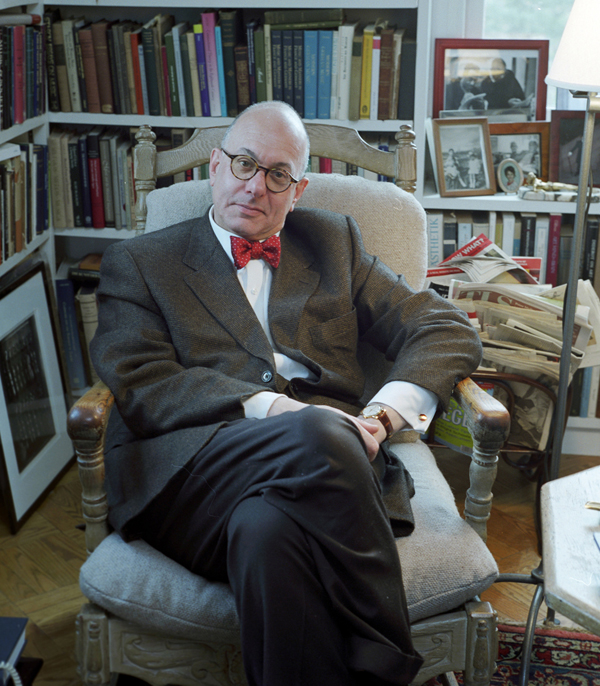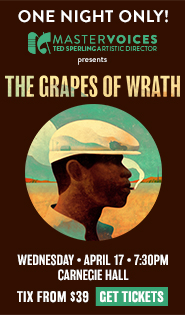Botstein, ASO channel Bernstein and other Bostonians

Leon Botstein conducted the American Symphony Orchestra Friday night at Carnegie Hall.
A trip to the attic can yield half-forgotten treasures, as conductor Leon Botstein and the American Symphony Orchestra demonstrated Friday night at Carnegie Hall with a program titled “Bernstein and the Bostonians.”
No one today would call Leonard Bernstein half-forgotten, but on the evidence of Friday’s concert, his friends Arthur Berger, Harold Shapero, Richard Wernick and Irving Fine—all Boston-bred and/or Harvard-educated—deserve more attention from symphony orchestras than they’ve been getting these days.
Four of the five pieces on the program, composed between 1948 and 1962, seemed to be seeking an American-accented alternative to the orthodoxies of the day: the Schoenberg-Webern serial school and Stravinsky’s neoclassicism.
Wernick, a generation younger than the others, was present on Friday to acknowledge the applause for his 1995 work for mezzo-soprano and orchestra“…and a time for peace,” composed in a more contemporary, muscular orchestral idiom than the others.
Bernstein’s “alternative,” of course, was to bust out of the concert hall altogether and head for Broadway. In opening Friday’s program with his cheeky Overture to Candide, conductor Botstein risked making the more “serious” symphonic works that followed sound dry by comparison.
In the end, that was not a problem, if only because Friday’s performance, proficient as it was, conveyed only a fraction of the score’s sassy wit and sentimentality. So the subtleties of Arthur Berger’s Ideas of Order, inspired by poems of Wallace Stevens, were not upstaged by Broadway Lenny.
Like Stevens’s verse, Berger’s score dealt in shades of meaning conveyed with an open, transparent syntax. Its sweet little theme with a delicately limping accompaniment was varied with touches of Bernstein-like sentiment, dainty high stepping that recalled Stravinsky’s ballets, and even a folksy waltz. Friday’s performance could have used more contrast between variations.
The first movement of Shapero’s Symphony for Classical Orchestra was a reminder that, while many composers admire and study Beethoven, few actually adopt his orchestral textures or channel his larger-than life personality, as Shapero did here. Neo-classicism may have been common in 1948, but neo-Beethovenism was not.
Far from intimidated by his model, Shapero composed an animated, witty, inventive update of the master from Bonn, then went on in the Adagietto second movement to craft an expression entirely his own, with a mixture of optimism, lyricism, and anxiety straight out of 1940s postwar America.
An “Eroica”-like scherzo in skittering threes followed, with droll, slightly wild woodwind episodes. Botstein and his players were able to catch at least some of that lightning in a bottle.
The heavy-booted but playful finale seemed to recall Brahms more than Beethoven in its sudden pauses, sonorous second theme, and fugue-like development. Without even a hint of old-world angst to triumph over, Shapero went for a gloriously overlong Beethoven coda anyway, the cherry on top of a very accomplished work.
Wernick’s “…and a time for peace”—its title drawn from its final text, the famous passage from Kohelet (Ecclesiastes) that begins “For everything a season…”—was in its way as much a meditation on order as the Berger work heard earlier.
Cosmic disorder was the subject of the first movement, its apocalyptic Hebrew text declaimed by mezzo-soprano Katherine Pracht in long notes, set mostly low in her range. The combined efforts of singer, conductor and composer enabled her voice to carry over the angular, up-surging orchestral part.
An interlude followed, based on a text from Dante’s Paradiso comparing the order of the universe to that of God, with the singer’s gentle declamation accompanied by harp and undulating vibraphone, joined by other solo instruments as dancing points of light. Despite this ravishing effect, the piece seemed to go on too long for an interlude.
On the other hand, the lengthy biblical text of the last movement, with its philosophical play of opposites (“a time to weep and a time to laugh…”) seemed to fly by, with an urgent, chattering orchestra accompanying an almost patter-like delivery by the singer. Brass flashed and drums thumped, but all ended quietly when “a time for peace” closed the litany.
For all their virtues, the evening’s other “rediscovered” scores seemed to pale somewhat alongside Irving Fine’s Symphony, which closed the program. Composed in 1962 just a few months before Fine’s untimely death at age 47, the work revealed a master of orchestral drama, its opening Intrada a march of Mahlerian expressive dimensions, though in no way imitating that composer.
In the most compelling performance of the evening, Botstein and the orchestra realized Fine’s masterful use of instrumental color for expressive purposes, ever-changing yet driven by a powerful through line that gave this atonal music a quasi-tonal feeling of inevitability.
The aptly-titled Capriccio crackled with biting strings and barking brass, its urgently shifting meters inevitably recalling The Rite of Spring sometimes, but its inherent freshness and vitality sweeping away comparisons.
A craggy, uncompromising Ode in slow tempo concluded the work, with big gestures recalling Fine’s friend and mentor Aaron Copland in his sternest mood. The slashing strings, urgent brass, and explosive percussion never seemed laid on, but rather called into existence by a powerful musical impulse that just grew in force to the final slow crescendo.
One felt sorry for those audience members who tired of the long program’s novelties and left early. They missed a first-rate performance of a great and too-rarely-heard American work.
The next program of the American Symphony Orchestra will be “Prague Central,” works by 20th-century Czech composers, 8 p.m. Feb. 10, 2017. americansymphony.org; 212-868-9276.




Posted Nov 21, 2016 at 3:36 pm by William Mayer
Maestro Botstein and the energetic players handled the rapidly changing orchestral sonorities with such eclat! All seemed natural without strain.
Here’s an unusual reflection: I felt the same sense of discovery in the ASO’s playing that I had felt 45 years ago when Stokowski premiered my piano concerto, OCTAGON, with soloist William Masselos! (Also at Carnegie.) And by coincidence Friday, Nov. 18th, was my 91st birthday!
Do keep up the fine and adventuresome work!
William (Bill) Mayer
Posted Dec 02, 2016 at 2:58 pm by Saul Davis Zlatkovski
Botstein should turn his attention to other mainstream composers who did not follow trends that became dominant later on. Nicolai Berezowsky, Norman Dello Joio, Paul Creston, among others. The idea that only a couple of trends dominated is a back-formation. Serial music was fairly restricted to academic circles. Orchestras constantly played mainstream composers of the day, such as Roy Harris, Roger Sessions, and more. We can’t afford reductive thinking, the music of the 20th century is vast, broad in scope, and full of many threads of music, classical, romantic, impressionist, etc., not just serial and neo-classical (a misnomer if ever there was one).